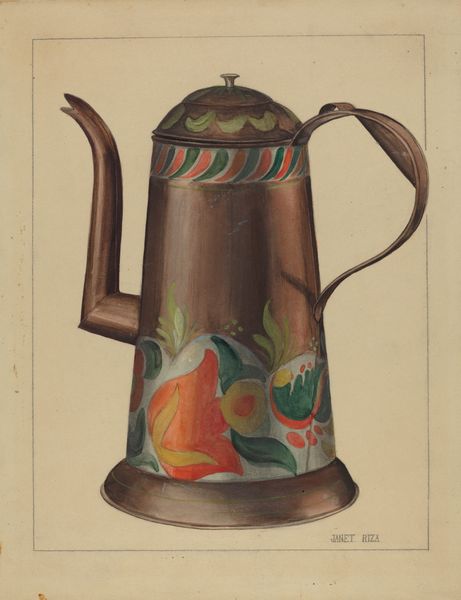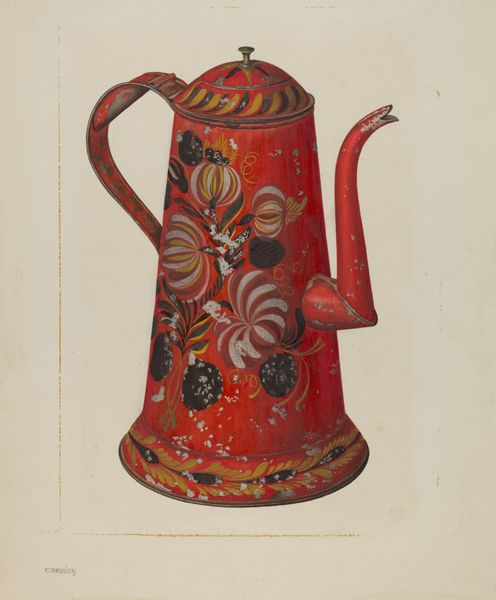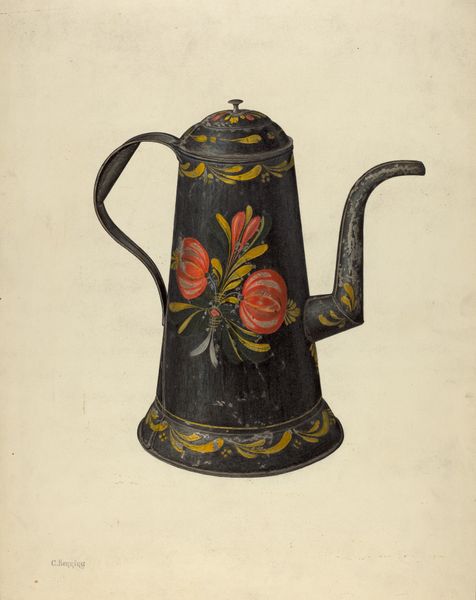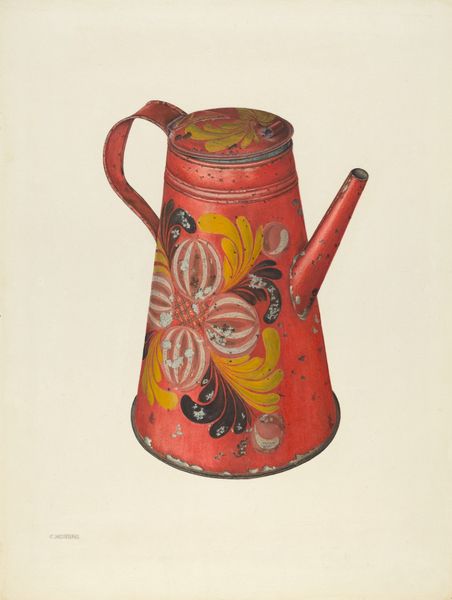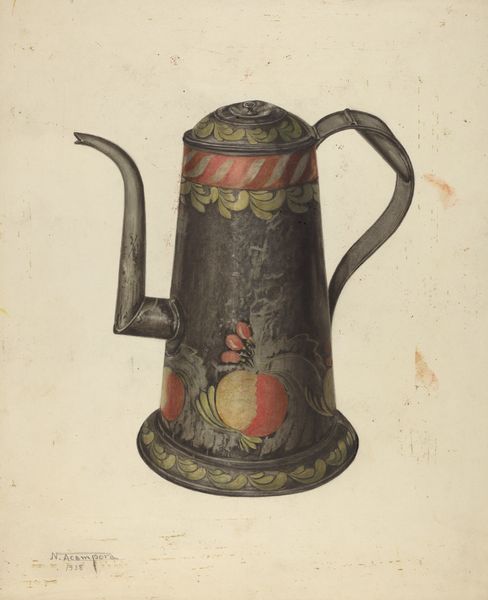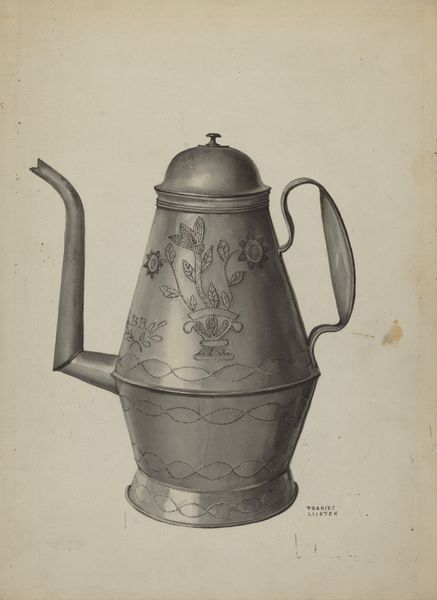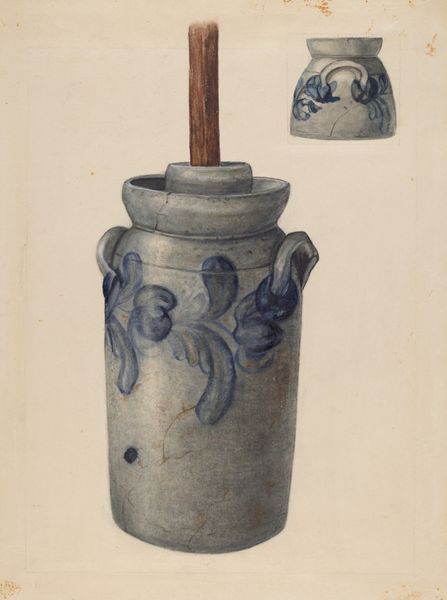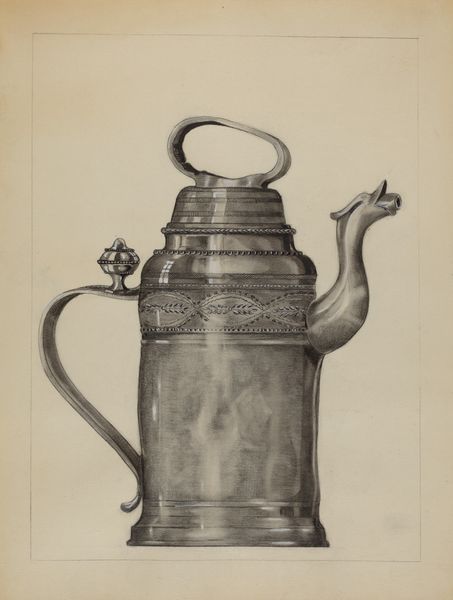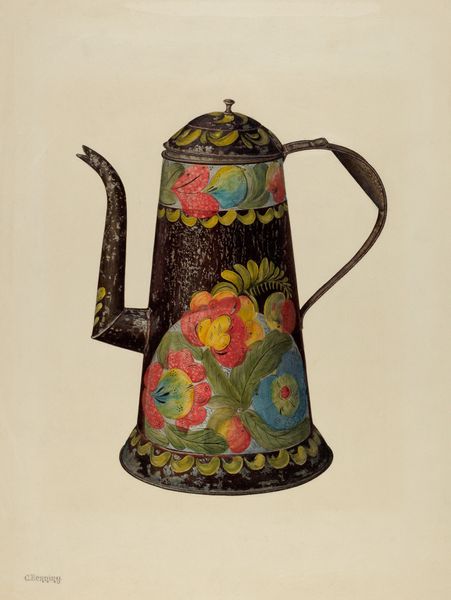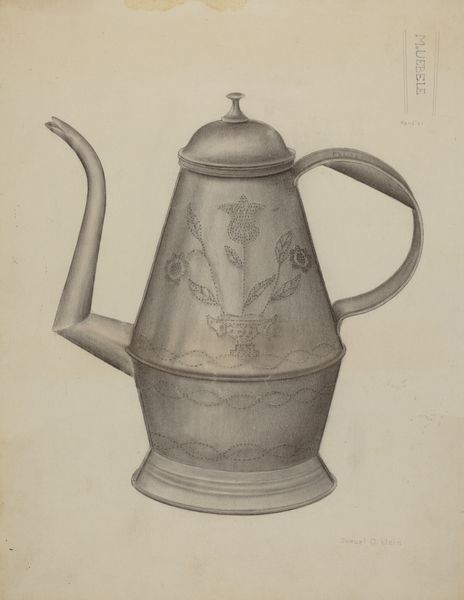
drawing, coloured-pencil, watercolor
#
drawing
#
coloured-pencil
#
caricature
#
watercolor
#
coloured pencil
#
watercolour illustration
#
decorative-art
#
realism
Dimensions: overall: 28 x 22.2 cm (11 x 8 3/4 in.) Original IAD Object: 10 1/2" high
Copyright: National Gallery of Art: CC0 1.0
Editor: Here we have Mildred Ford's "Toleware Coffee Pot," likely made between 1935 and 1942, rendered in watercolor and colored pencil. There’s something almost cartoonish about the rigid shapes and bold outlining. What stands out to you, from a purely formal perspective? Curator: The piece offers a fascinating interplay of form and function, or rather, representation of function. Note how the artist emphasizes geometric shapes – the cylindrical body, conical lid, and the almost triangular spout – reducing the coffee pot to its essential components. This geometric simplification is further enhanced by the decorative elements. Editor: The flowers especially, almost like stencils… Curator: Precisely. These floral motifs, while decorative, serve to disrupt the object's implied function. They flatten the image, drawing attention to the surface rather than the depth of the object. Consider, too, the artist’s handling of color. The limited palette – earthy browns, muted yellows, and the pops of red – contribute to the piece's overall visual harmony, yet each color occupies a carefully delineated space. Editor: So, the composition is more about the arrangement of shapes and colors, rather than a realistic depiction of a coffee pot? Curator: Indeed. The 'coffee pot' becomes a vehicle for exploring shape, color, and pattern. The success here lies not in its representational accuracy but in the formal relationships established between its constituent parts. Note how the handle mirrors the spout in both form and coloration. Does this enhance your understanding? Editor: It does. It's about how the different parts interact with each other on the surface, less about the coffee pot itself. It’s a very thought-provoking approach. Curator: Precisely. And a useful reminder that art can transcend mere representation.
Comments
No comments
Be the first to comment and join the conversation on the ultimate creative platform.


